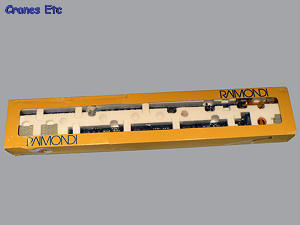 | | The box tries to set a record for being longest and thinnest. | 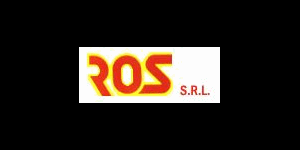 | 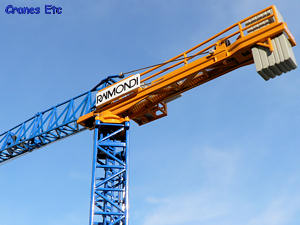 | | Counterweight jib. | 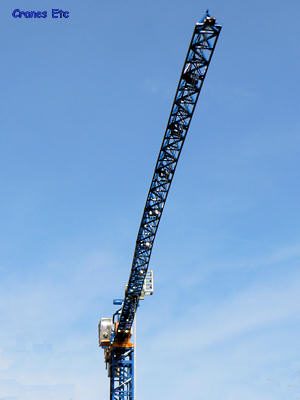 | | The jib was not straight and true out of the box and the camera makes it look a little worse than the eye sees. It can be carefully and gently straightened. |  | | Trolley and trolley motor. |
| This is the first 1:87 tower crane model from the Italian model maker Ros Agritec. Fittingly, the model is of a Italian Raimondi tower crane, and is a 'Topless' model from the MRT series, the MRT84.
Packaging
The model is packed in an extremely long box. This is because the jib and counterweight section are preassembled as one piece measuring over 70cm (28 inches). Packed within an expanded polystyrene tray the model is well protected and the review model arrived undamaged. A single sheet of pictorial instructions is provided.
Detail
At the base, the model is unusual as it screws onto a black plastic base plate to provide extra stability to the model and this works quite well as it is not very stable without the base.
The cruciform arrangement at the base is all metal and includes a small switchbox. The ballast blocks are concrete coloured and are solid pieces with grooving detail to give the appearance of being separate slabs. The blocks are marked as consisting of 4 x 2500kg each equating to a total of 20 tonnes of ballast.
The mast sections are all metal and include a vertical plastic ladder section. They are screwed to each other with four micro screws which is very secure in action and better than a pin mechanism although the downside is that the mast connection points are unrealistically large. Each mast section is a realistic length although the internal ladders are one continuous piece.
Moving to the crane, the cab is small and the seat inside seems quite a bit smaller than 1:87 scale. The slewing motor is modelled together with a toothed slewing ring and the counterweight jib has a switchgear box (to which a supplied transfer can be fitted). A tiny winch hoist is modelled at the rear in addition to the working hoist provided. An excellent feature of the counterweight jib is the mesh walkway flooring. Handrailing is alright but perhaps a little too fat for the scale of the model. The counterweight block itself is a single solid piece, with grooving in the casting to give the appearance of separate concrete slabs.
The jib is a delicate piece of work and is actually made up of nine separate sections just like the real machine. Unfortunately on the model they are permanently fixed together so it is not possible to dismantle it easily. The triangulated lattice work is complete on all faces of the jib, both sides and bottom. The method of joining the sections together does result in an unrealistic downstand piece at each join which spoils the look a little from certain angles. Also the nature of the construction means that the jib is not entirely straight and true with the review model showing some bends out of the box. These are not too serious and with care the jib can be straightened to a satisfactory degree.
A trolley motor is fixed to the second jib section and the various pulleys on the superstructure are plastic or metal. The trolley is metal and includes a representation of a basket for a man to travel in although the model one has no floor.
The hook block is good and includes two tiny metal pulleys and a separate hook attached via a loop. A metal concrete skip is provided presumably to add weight to keep the hoist rope taught. However if anything it is a bit too heavy and large for the model.
Features
The mast sections can be unscrewed meaning that the model can be erected at different heights using any combination of the cruciform base and six mast sections although the ladder sections would have to be cut to allow this.
The model has the usual 1:87 tower crane features of raising and lowering the hook using the winch, and the model can rotate fully. However the Raimondi has a feature seen for the first time in this scale and that is a working trolley which moves by turning the winch on the trolley motor. It actually works quite well with the tension in the towing ropes maintained by a simple but ingenious spring mechanism. There is a small downside to this which occurs because the trolley motor fouls the trolley so it is not possible to bring the trolley right close in to the mast. This means the model cannot properly be displayed as if it were out of service.
Quality
This is a relatively high quality model with some fine casting and a good paint job. The working trolley mechanism enhances the feel of quality.
Price
Ros have produced a very good value model with the price being significantly less than similar type models from other model makers.
Overall
This is a fine first effort for a 1:87 tower crane from Ros with many points to commend it and lots of detail for the price. In fact it could have been exceptionally good if it had been taken a step further and was fully able to be dismantled in parts like the real machine. With that said the model looks good and compares well with those from other model makers.
Footnotes
The model first appeared at the end of 2005 and was shown at the Nuremberg Toy Fair in February 2006.
|
| |
| 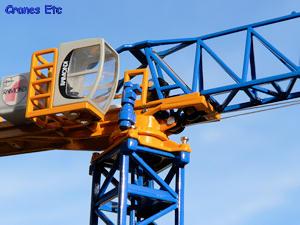 | | Up close detail around the cab is quite good although hand rails are a bit too fat for the scale. | 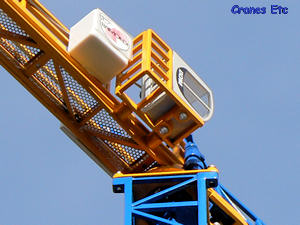 | | Mesh walkway is a good detail. | 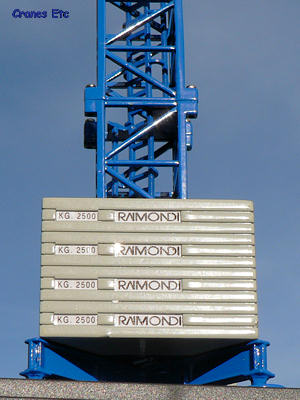 | | Ballast weights at the base. | 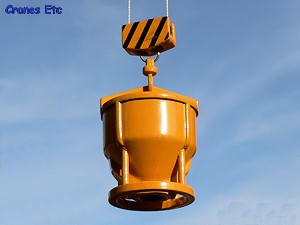 | | The concrete skip adds a lot of weight to the hook, but don't trolley out to the end of the jib with it! |
|

